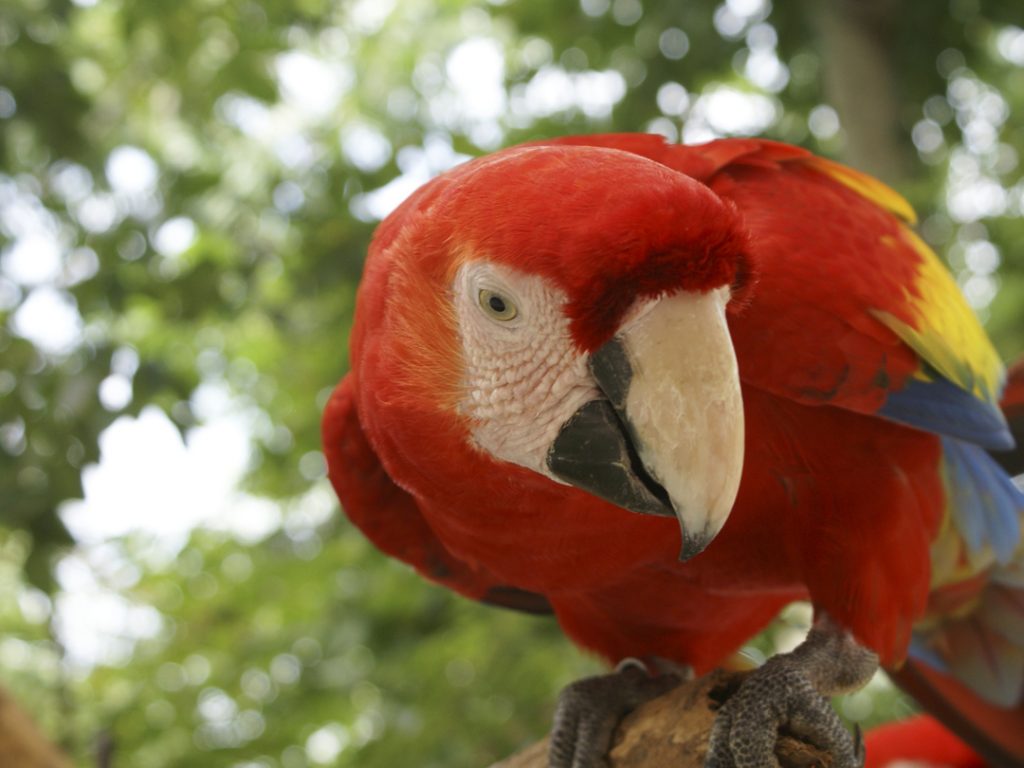Melipona bee, creator of the Mexican sacred honey.
July 04, 2023
Did you know that a Mexican bee produces honey with many medicinal benefits?
In this article, I will tell you everything about the melipona bee, where it lives, what makes it different from other bee species, how the honey is harvested, and its wonderful properties.
Let’s start with the location. Melipona bees are mainly found in the Yucatan Peninsula and other parts of Mexico, such as the coasts of Chiapas, Oaxaca, and Veracruz.
It is a warm-weather bee known by communities in the peninsular region and other regions of Central America for many generations.

Since pre-Columbian times, people have taken advantage of its healing (magic) properties, making it a “sacred bee” for many communities.
Unlike other species of bees, the meliponas live in permanent colonies with a queen responsible for laying the larvae; the drones fertilize the queen, the workers produce honey, and the guardians, guard the entrance to the hive and protect it from any predator.
A fun fact about the Melipona bee is that though it doesn’t have a functional sting, it’s not completely harmless; it bites to defend its colony from other species. Some say that they cling in such a way that they die during combat.
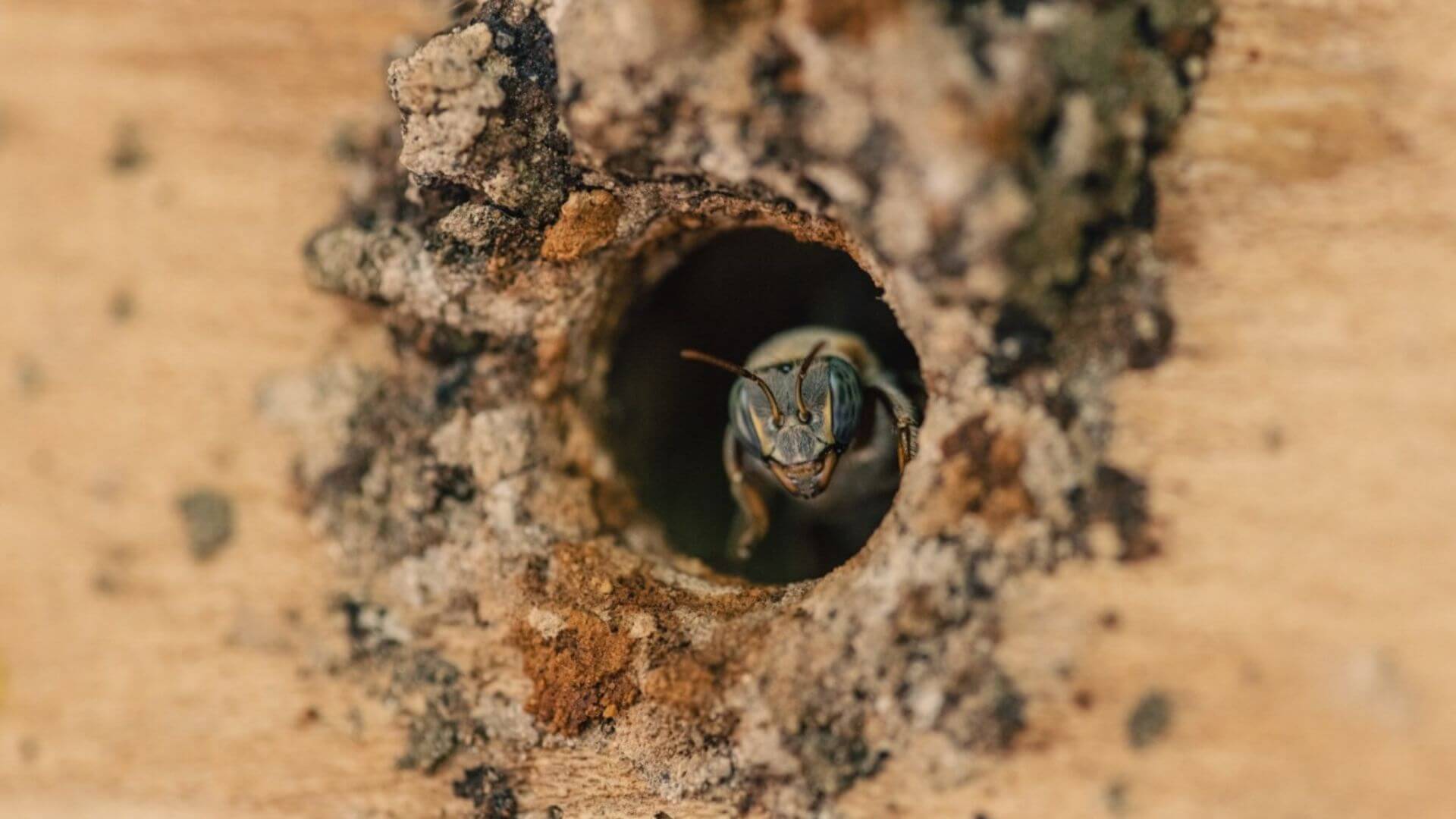
The Meliponario,sanctuary of the bee
The melipona bee is an endangered species. One of the main reasons is the loss of habitat, for which the Meliponario was created. This space helps replicate, in a certain way, a special area for them that is completely safe.
A meliponario is a space comprising a huano or grass palapa and wooden shelves holding the jobones (I will explain them later).
The orientation of the meliponario must be in position with the sun to provide mild heat to the bee colonies.
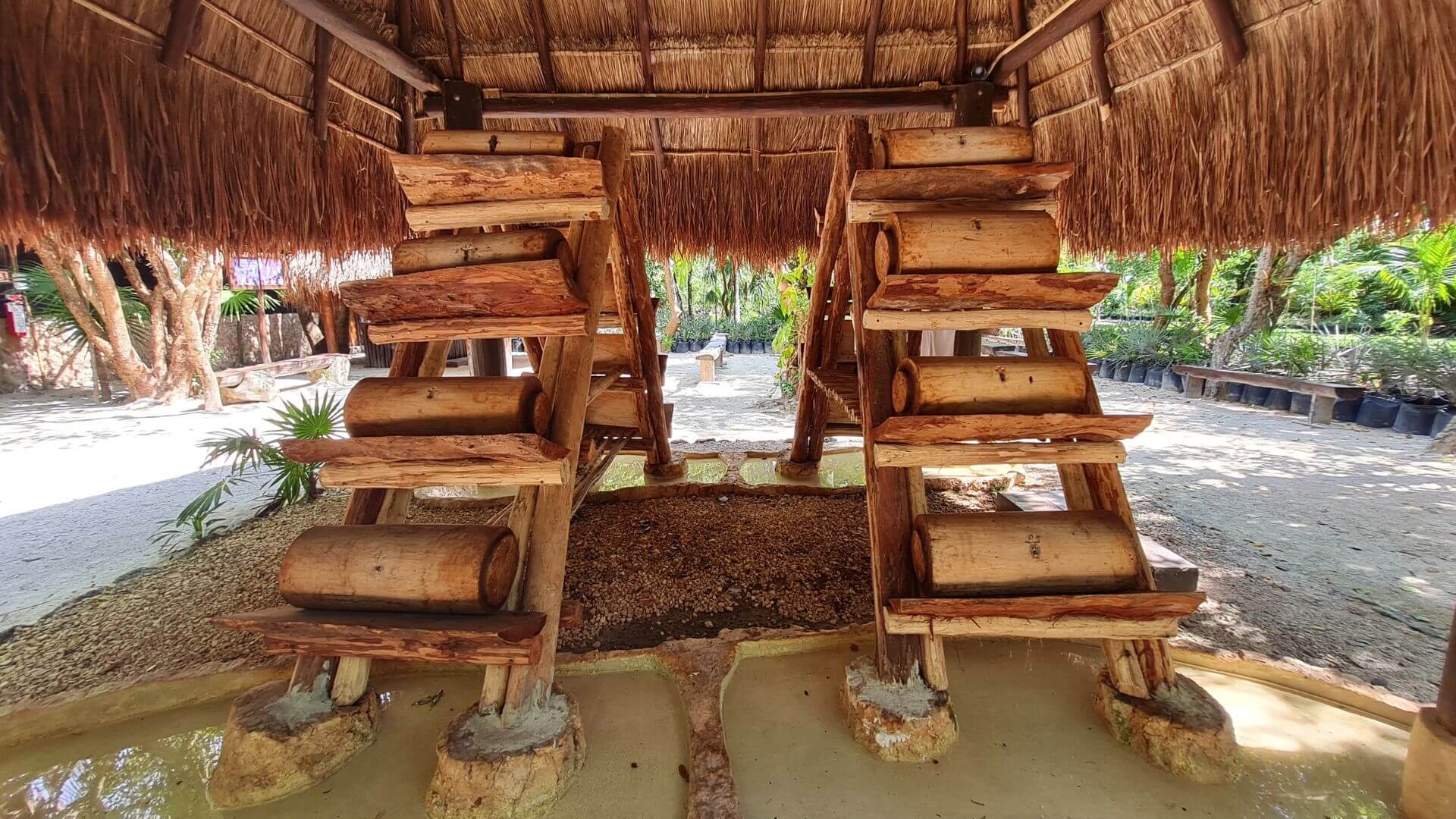
Here you can see this infrastructure in close detail, which facilitates the breeding and conservation work of the melipona bees.

Jobones: the house of the melipona bees
A jobón is a hollow trunk of Ramón trees created naturally where melipona bees build their colonies.
Nowadays, and for many decades, jobones are handcrafted with easy-to-use tools, carved until the center of the wood is worn away.
The lateral parts are normally closed with circular wooden plugs or, in some cases, stone. The lids are sealed with a mixture of mud made from mud and water.

When this process is done, they make a small hole in the middle of the flat side, making sure it passes through the wall of the wood, commonly called a piquera (spout).

This “piquera hole” is essential in the house of the melipona bees; it’s the only way in and out of the jobón; they need it to journey in search of food.
The honey-harvesting artisanal process
There’s not only one melipona honey-harvesting process as such, it varies depending on the community, but in general, we could say that this is a general one among all of them.
-The honey harvest is carried out twice a year, at maximum.
-They prepare aspecial mixture of mud to cover the jobónimmediately after extracting the honey.
-It’susually done in the hottest months of the year.
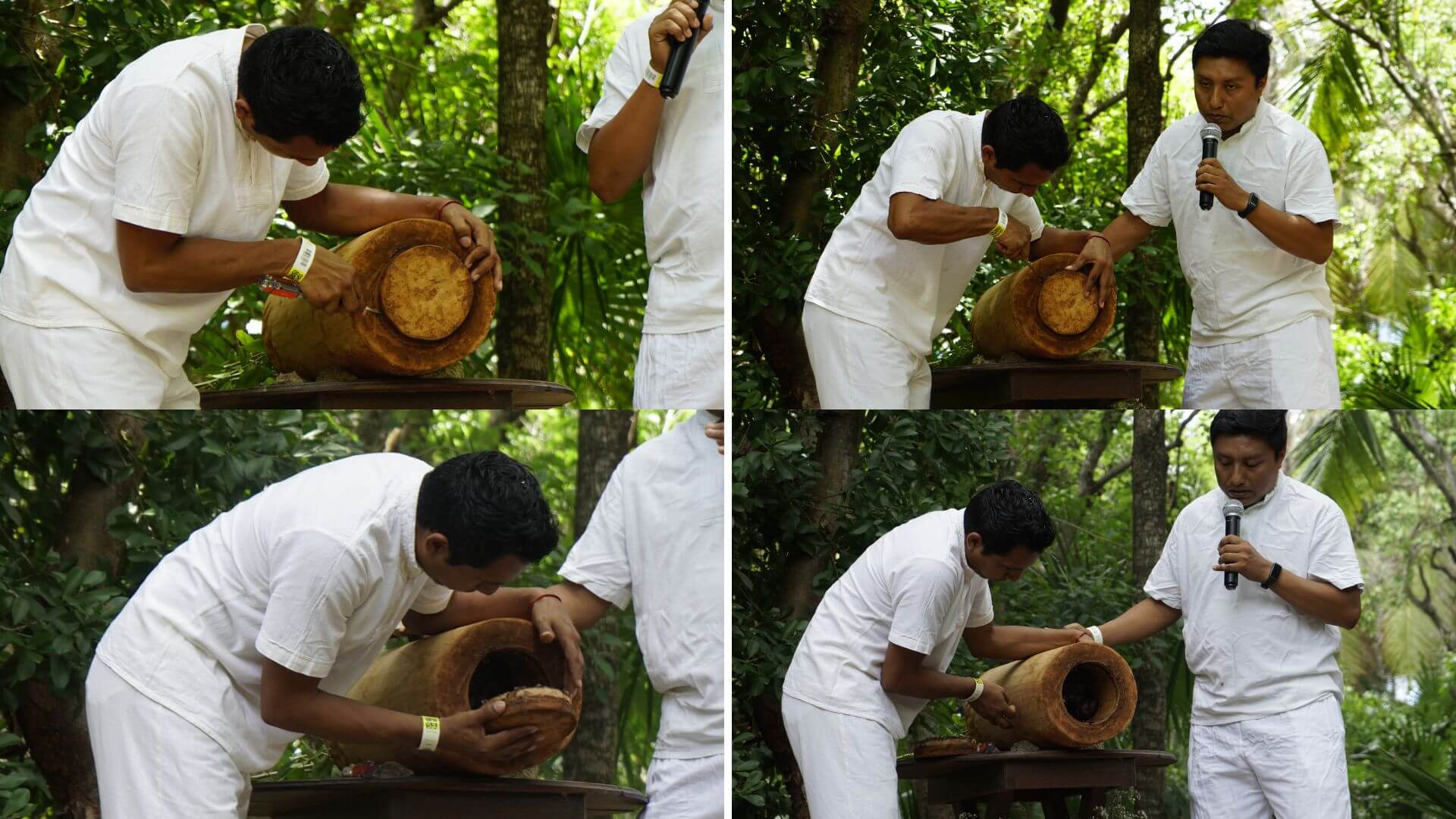
-They perform it on full moon days.
-This medicinal honeyis extracted with a pointed toothpick; the jars are chopped,ensuring they don’t break the pots with pollen.
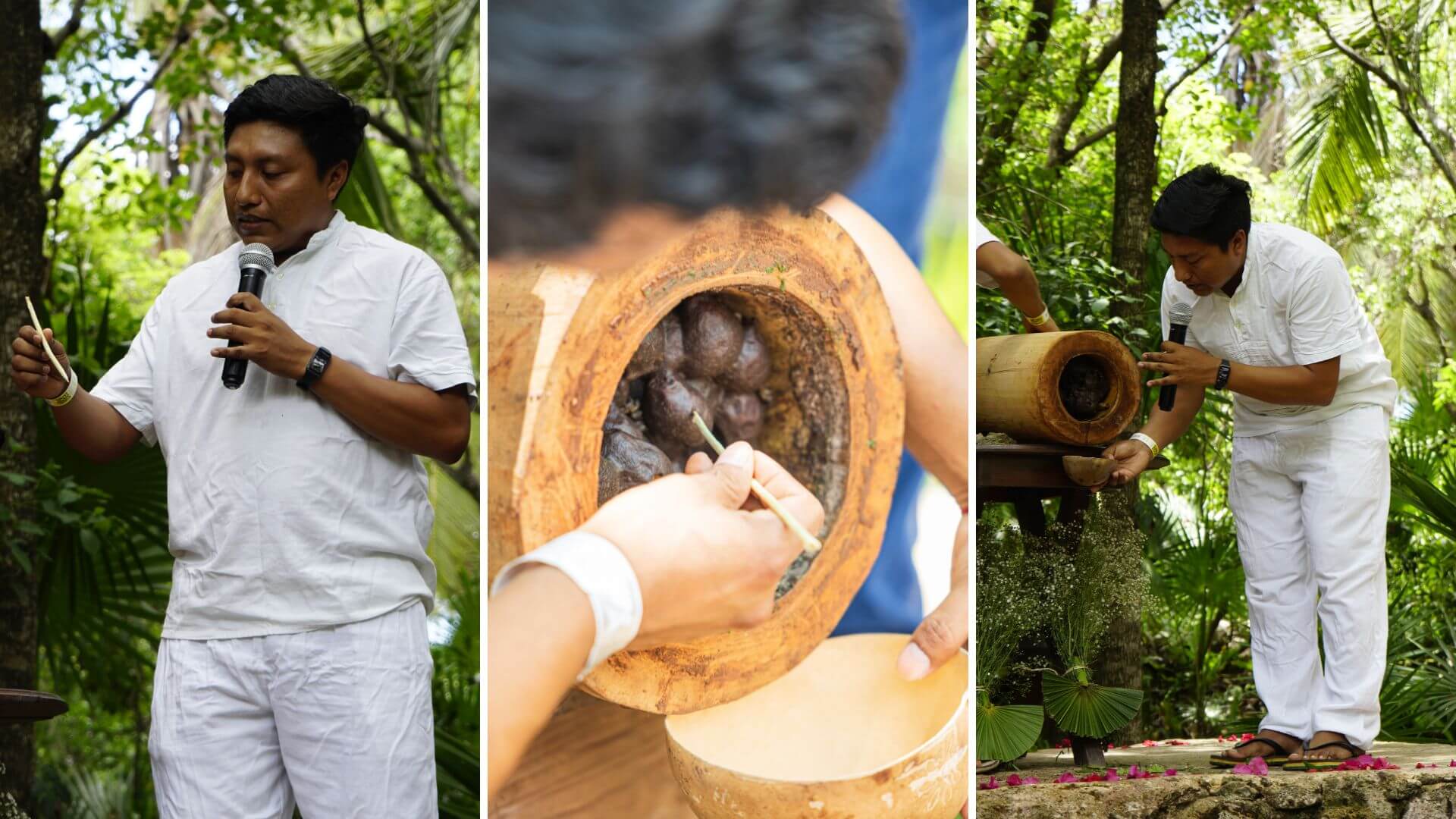
-The honey goes down little by little, spilling between theJobónwhen placed at an angle of 15 °.
-They place a container to retain the honey when it’scoming out, so the residues that may come out are mechanically filtered. This is howthey obtain puremeliponabee honey.
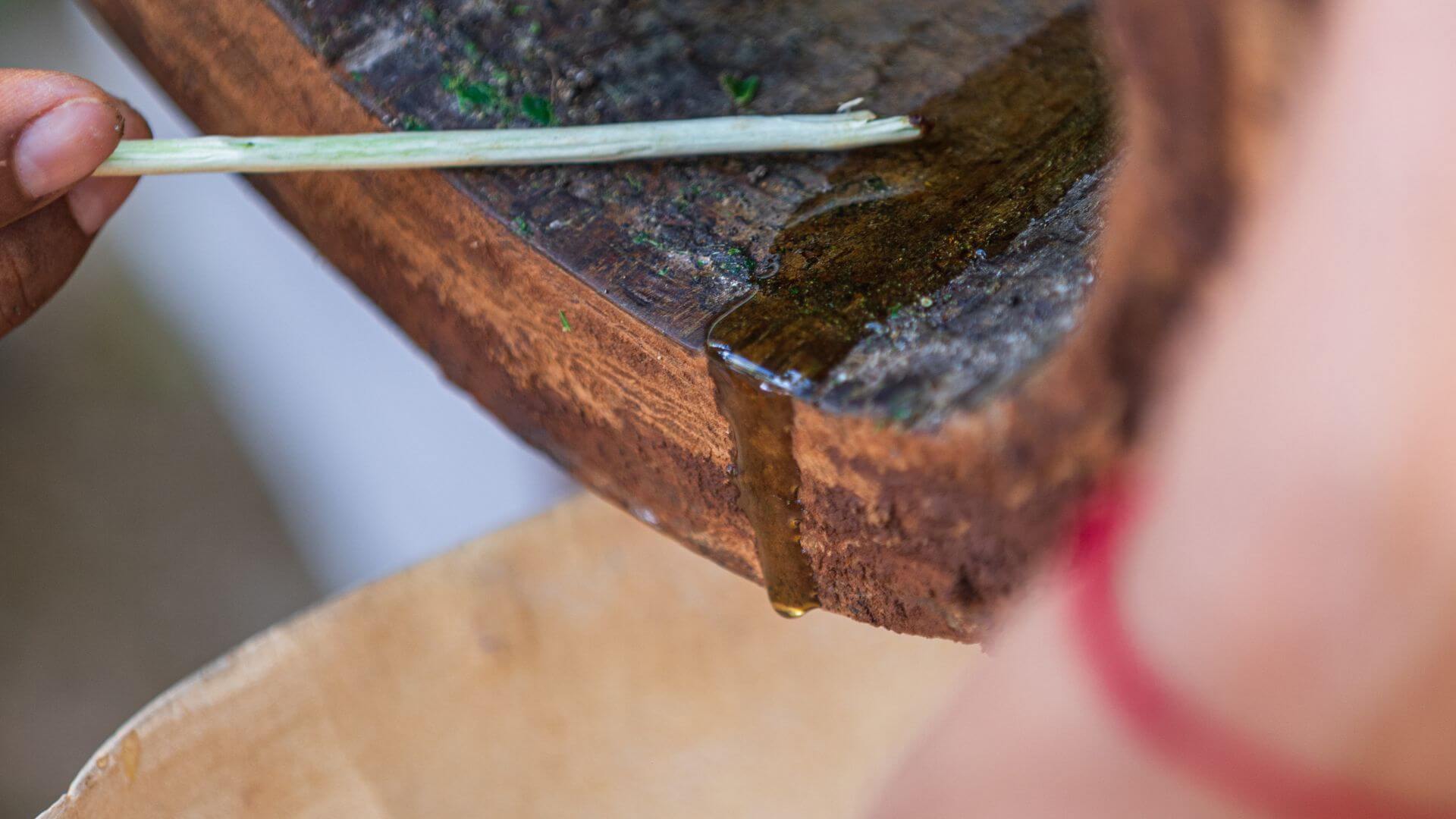
-Finally, thehoneygoesthrough a meshortullfiltertoremovesomeimpurities and isstored in a container whereeverythingwill be stored.
Benefits and uses of melipona bee honey
The ancestors used melipona honey to:
-Brew vaporizingpotions
-Rubbing and manipulating muscles
-Treat eyes, ears, respiratory and digestive conditions,and skin problems
-Stew recipes
On the other hand, the beeswax was used to:
-Makemolds
-Polishhunting, fishing,and householdartifacts.
The honey produced by the melipona bee is among the best in the world as it turns out to be medicinal.
Some of the uses of melipona honeybee nowadays are:
-To treat infections such as conjunctivitis, redness,or dry eyes, and in some cases, its recommended as an alternative treatment for cataracts
-Its direct application to wounds helps reduce inflammation and healing, promoting skin regeneration.
-Improvesdigestion
-Relieve oral and gum injuries.
-Ideal fortherespiratorysystem
-Low immune system
-Calm fevers
-For bites
As you read, the conservation of this bee species is essential. In addition to its ecosystem function pollinating, it’s the only Mexican bee, and its precious honey provides us with many health benefits.
Do you know about the Melipona Bee Care and Conservation programs that are carried out in Xel-Há Park?
This park in the Riviera Maya has a Meliponario inside its nursery. You can go and learn everything about them when visiting this Natural Wonder.
In addition, in Xel-Há, the Melipona bee harvest ceremony is held twice a year, in June and December, as part of its Traditions Conservation and Preservation Program.
It’s a ceremony to thank for the honey harvesting where the local community shares traditional dishes cooked specially for this.
Write this on your travel bucket list. If you, too, love bees and their honey, we assure you an unforgettable experience.

Editora de Blog Xcaret. Comunicóloga que ama viajar, escribir, tomar fotografías y estar siempre rod...

Posts Relacionados
Grupo Xcaret
Hotels


